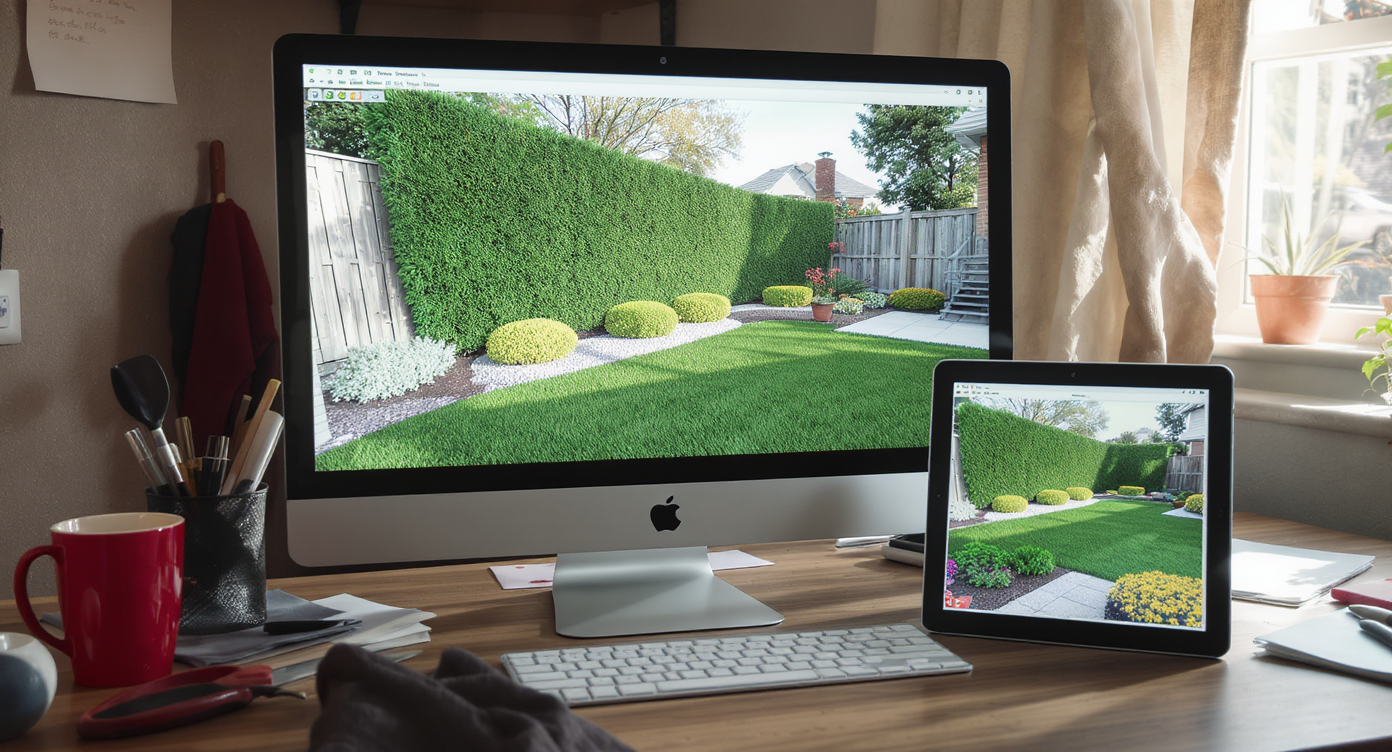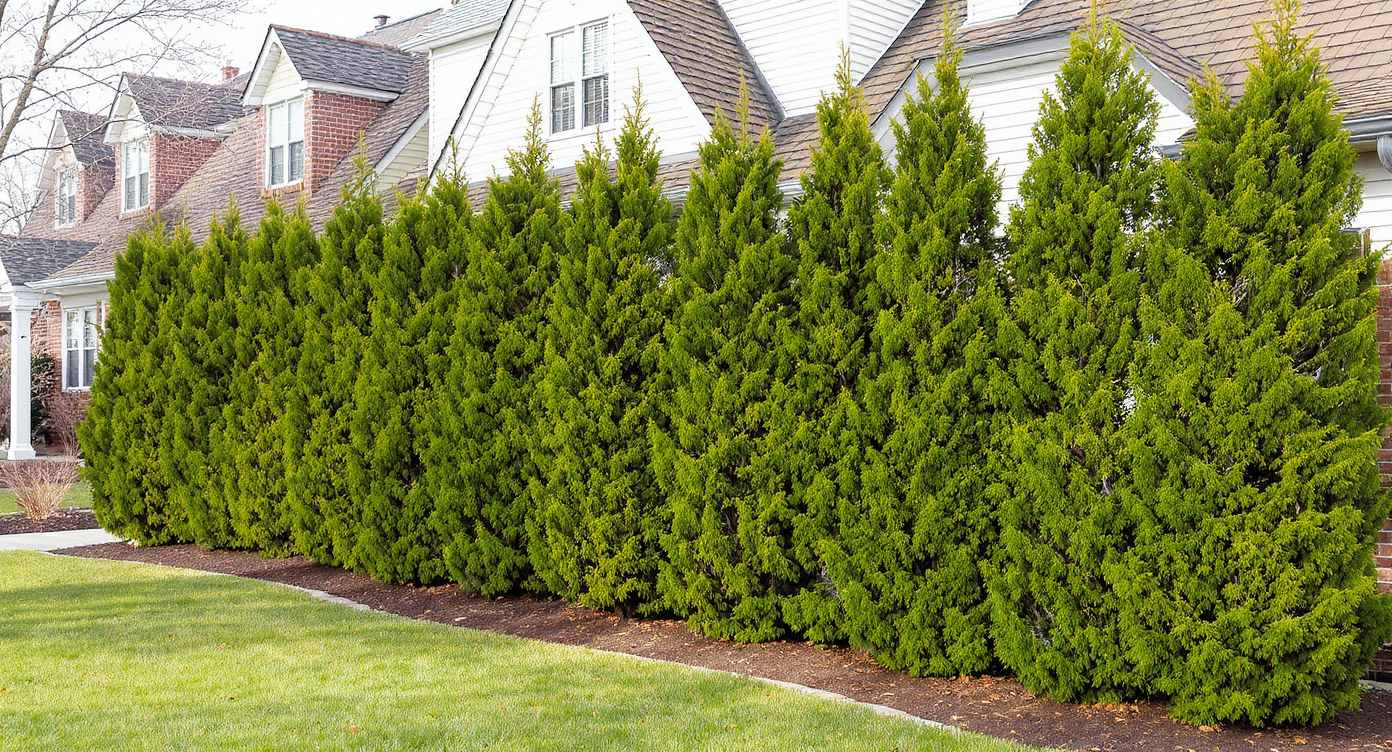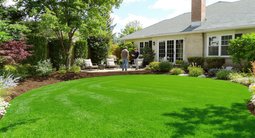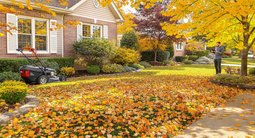TL;DR
Evergreens retain foliage 12 months, delivering winter privacy when deciduous trees go bare. In Chester County, PA (Zone 6b/7a) a mixed-species hedge of deer-resistant spruces, hollies, and Japanese cedar can block views in 2–4 years—faster if you start with 6–8 ft nursery stock.
USDA Zone 6b–7a plants can add 6–10 ft of screening in 3–5 years

A thoughtful mix of evergreens offers robust winter privacy with texture and year-round greenery.
If your yard felt secluded in October and exposed by December, winter privacy planting is the fix. For Southeastern Pennsylvania, prioritize evergreen screening with a mix of conifers and broadleaf evergreens: Norway spruce, white or Serbian spruce, Cryptomeria japonica ‘Radicans’/‘Yoshino’ (Japanese cedar), and hardy hollies like Ilex opaca (American holly) or ‘Nellie R. Stevens’. These options are more deer-resistant than arborvitae and can create a living wall that looks good year-round. Try your own exterior layout instantly on ReimagineHome.ai: https://www.reimaginehome.ai/?utm_source=blog
Deer browse up to 5–6 ft high, so species choice—and protection—determines success

Protect lower layers from deer browsing up to 6 feet for successful evergreen privacy screens.
Fast and evergreen is the brief—but deer pressure is the reality in Chester County. Deer can browse roughly as high as their standing reach, which is commonly 5–6 ft, so anything tender below that line is vulnerable in winter. To reduce browse and still gain speed: - Choose conifers with a prickly or resinous texture deer avoid: Norway spruce (Picea abies), white spruce (Picea glauca), and Serbian spruce (Picea omorika) hold needles densely through winter and are rarely a first choice for deer. - Favor Japanese cedar (Cryptomeria japonica ‘Radicans’/‘Yoshino’) where you have at least half-day sun; it’s quick (about 1–2 ft/year once established) and typically deer-resistant in the Mid-Atlantic. - Use broadleaf evergreens with proven winter structure: American holly (Ilex opaca), ‘Nellie R. Stevens’, or ‘Oakland’ holly add glossy screening and berries for wildlife. - Treat arborvitae (Thuja) and Leyland cypress with caution under heavy deer pressure. Green Giant can be browsed in parts of PA; Leyland grows fast but struggles with canker and storm breakage over time. - Protect new plantings for 2 winters with temporary deer netting or repellents rotated every 3–4 weeks; it’s the difference between thriving and losing your investment.
Anecdote
A homeowner in West Chester placed three 10 ft Cryptomeria at the apartment-facing gap, then ran Serbian spruces at 10 ft intervals and tucked inkberry hollies along the base. By the second winter the living wall read as a designed grove, not a barricade—and the upstairs kitchen finally felt private again.
Staggered, mixed-species hedges layer 2–3 heights for denser, faster coverage

Staggered mixed-species hedges layer multiple heights for faster, denser privacy coverage.
The quickest, best-looking privacy screens aren’t monocultures. A layered, staggered planting uses 2–3 heights and species, which fills gaps and looks natural in winter. - Tall tier (20–50 ft at maturity; plant now at 6–10 ft): Norway spruce, Serbian spruce, white spruce, Cryptomeria ‘Radicans’. Spacing: 8–12 ft on center (OC) for spruces; 8–10 ft OC for Cryptomeria. - Mid tier (8–15 ft): ‘Nellie R. Stevens’ holly or ‘Oakland’ holly at 6–8 ft OC. These carry foliage to the ground better than many conifers. - Low tier (3–6 ft): Inkberry holly (Ilex glabra ‘Densa’/‘Shamrock’) at 3–5 ft OC to block under-views and deer browse lines. - Staggering: Offset rows by half the spacing (for example, 10 ft OC in the back row; 6–8 ft OC in front), which closes sightlines sooner. - Berms and grade tweaks: A 12–24 inch berm under the hedge adds immediate height and improves drainage; many homeowners combine a 6 ft fence with a bermed hedge for full privacy while plants grow. For Chester County soils, loosen the planting zone broadly, keep root flares at grade, water deeply (10–15 gallons per tree per week in the first growing season), and mulch 2–3 inches—not touching trunks.
5-minute AI mockups help you test 6–8 ft spacing, berms, and fence + hedge combos

5-minute AI mockups let you test hedge spacing and fence combos before planting for smarter privacy design.
Spacing, heights, and sightlines are hard to visualize on paper—and easy to see with AI. In 5 minutes, ReimagineHome.ai lets you drop in a 6 ft privacy fence, test an 18 inch berm, and compare an all-spruce row versus a mixed spruce + holly pattern at 8–10 ft spacing. You can also preview winter views by toggling deciduous plants ‘off’ and keeping evergreens ‘on’, so you’re designing specifically for January, not June. - Upload a current exterior photo, mark property lines, and sketch the view corridor you want to block. - Drag in conifers at realistic sizes (6–8 ft initial height) and set growth rates (1–2 ft/year spruces; 1–2 ft/year Cryptomeria; about 1 ft/year for hollies). - Test fence + hedge combos to meet code while achieving height: a 6 ft fence plus a 12–24 inch berm and 8–10 ft spruces typically screens a 2nd-story view by the third or fourth season. Explore more ideas on the blog: stone patio and fire pit materials for winter structure (https://www.reimaginehome.ai/blogs/stone-patio-and-fire-pit-materials?utm_source=blog), outdoor lighting design for safer paths (https://www.reimaginehome.ai/blogs/outdoor-lighting-design-ideas?utm_source=blog), and front yard makeover ideas for curb appeal (https://www.reimaginehome.ai/blogs/curb-appeal-front-yard-ideas?utm_source=blog).
A 30–40 ft viewline can be blocked in 2–3 seasons with fast growers started at 6–8 ft tall

Fast-growing evergreens, started at 6–8 ft tall, block wide viewlines in just 2–3 seasons for effective privacy.
Two homeowners in Southeastern Pennsylvania faced open winter views into neighboring buildings. One chose a back-row of 8–9 ft Norway spruces at 10 ft OC, with a front row of 5–6 ft ‘Nellie R. Stevens’ at 6 ft OC. Within two seasons, the combined effect blocked car headlights and apartment windows without feeling fortress-like. Another clustered three Cryptomeria ‘Radicans’ at the primary sightline, then extended the run with Serbian spruce; that ‘hero cluster + rhythm’ tactic made the screen feel designed, not just defensive. Small move, big impact: place the tallest, fastest grower at the exact view you want gone, not evenly spaced everywhere. Then fill to the sides with slightly slower, longer-lived species. Maintenance snapshot: expect needle shed inside conifers as they age; rake once each fall. Prune hollies after berry drop late winter. Fertilize only after the first year, if a soil test calls for it.
Visualization Scenario
Upload your yard to ReimagineHome.ai, trace the property line, and drag in 8 ft Norway spruces at 10 ft OC with a 6 ft fence and 18 inch berm. Swap one out for a ‘Nellie R. Stevens’ holly at the patio corner, then generate a second version using Cryptomeria ‘Radicans’ for the main sightline. Compare both side-by-side to choose the best mix of speed, deer resistance, and cost.
3–5 years: Your essential winter-privacy FAQ
- 3–5 years: How long will a privacy hedge take to fill in? Most mixed screens started with 6–8 ft nursery stock block views to 8–10 ft high within 3–5 years in Zone 6b/7a. Faster growers like Cryptomeria or Norway spruce can hit that sooner with irrigation. - 6–8 ft centers: How far apart should I plant? For Norway/white/Serbian spruce, use 8–12 ft OC (closer at the key sightline). For Cryptomeria, 8–10 ft OC. For tall hollies, 6–8 ft OC; for inkberry, 3–5 ft OC. - 5–6 ft: How high do deer browse? Plan on protection for the first two winters. Use temporary netting or a repellent rotation every 3–4 weeks, and consider a low-wire barrier around individual plants. - 6 ft fence: Is a fence enough by itself? Often not in winter. Combine a 6 ft privacy fence with a 12–24 inch berm and a staggered hedge to screen second-story views while plants grow. - 1–2 ft/year: Which evergreens grow fast in Chester County, PA? Cryptomeria ‘Radicans’, Norway spruce, white spruce, and Serbian spruce are reliable. Hollies add density at eye level. Arborvitae can be fast but are risky with heavy deer. - 2 inches of mulch: What’s the right planting care? Water deeply weekly for the first season, mulch 2–3 inches (not against trunks), and avoid fertilizer until year two unless your soil test suggests otherwise. - 0 invasives: Should I plant bamboo or English ivy for quick cover? Skip running bamboo and invasive vines. They’re hard to contain and not great for local ecology. Use trellises, fences, and the evergreen palette above instead. Alt: “Evergreen screen of Norway spruce and ‘Nellie R. Stevens’ holly visualized against a winter backdrop in ReimagineHome.ai.” Caption: “ReimagineHome.ai lets you test spruce spacing, holly layering, and berm height before you plant.” Alt: “Staggered hedge with Cryptomeria ‘Radicans’ at the main sightline and inkberry holly below the browse line.” Caption: “Layering two heights speeds coverage and looks intentional in winter.” Alt: “6 ft privacy fence with a 24 inch berm and 8 ft Serbian spruces modeled to scale.” Caption: “Fences handle the close-up; evergreens close the view.”
One upload can generate 10–20 AI variations to compare costs, growth, and curb appeal
If winter privacy is the brief, evergreens are the solution—and the best screens for deer country are mixed, not uniform. ReimagineHome.ai functions as your ai landscape design partner: upload a photo, place spruces and hollies to scale, add a berm, and compare three layouts side by side before you buy a single plant. In minutes, you’ll see which pattern delivers the fastest screen with the fewest plants, how it meets your budget, and how it upgrades curb appeal for all four seasons.
.svg)

.svg)














.png)